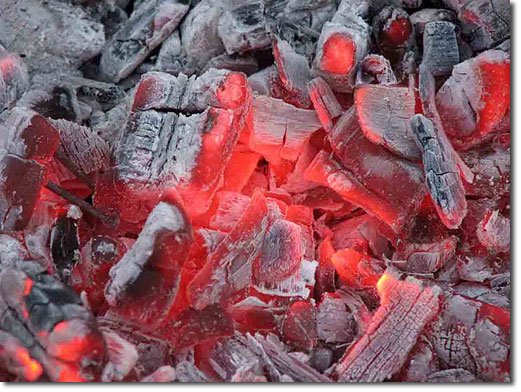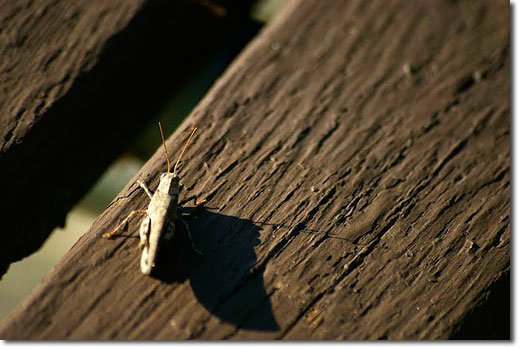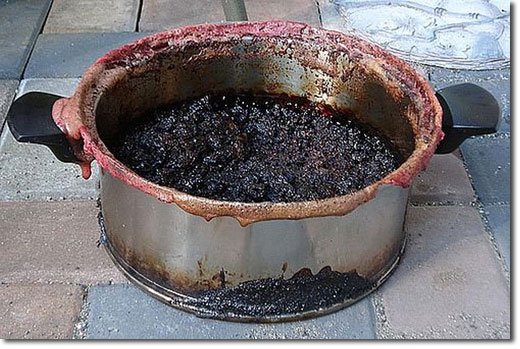
Wood ash can be obtained by sieving the remains of burnt, non-treated wood. The composition and amount of the ash will depend on the type of combustion (higher temperatures will lead to fewer ash residues). Normally, remaining ash will represent 0.43 — 1.82% of the initial wood weight.
Although poor in nitrogen, wood ash is a source of calcium carbonate (30-40%) and potash (10%), so they have long been used in agricultural soil and composting as a liming and deacidifying agent.
But wood ash has a number of other possible uses at home. Some of them are:
Wood insect repellent: Mix ash with water in a jar, and let it sit for a week. After that, apply it to raw wood to act as an insect repellent. You could also combine it with an oil-based mix of insecticide plants such as spicy paprika, chili or thyme.

Polish, abrasive cleaner: Dry ash can be used to remove embedded dirt, for instance the glass inside a stove’s door, or a frying pan. After preparing wood ash lye water (see below) the solid humid residues make a perfect polishing agent. If careful sieving was done before preparing the lye water, you won’t need to fear damaging or scratching metal surfaces. As you start to clean you will think you’re only making everything dirtier, but you’ll get surprising results after rinsing the ash off.

Maybe not that much…
Wood ash lye water: Although this is softer than normal lye water, protective gloves and goggles could be useful. Pour the ashes through a sieve to remove charcoal. Alternatively, we could let the ash sink in water and remove the charcoal with a strainer. The whiter the ashes, the better detergent we will get. The harder the initial wood, the stronger the final lye water. Mix ashes with 4 or 5 parts of hot water (or in sunny weather, simply let them sit in a metal bucket outside for a few days. This is what my Grandma did.) Stir it for a few minutes and cover the bucket with a cloth or a lid for one or two days. Make sure you stir again at least once during this time. After that the ashes will be at the bottom of the bucket, and the lye water will remain on top. Pour this soapy solution into a different container (be careful enough to label it properly!). The ashes can be used to polish metals, as indicated above.
If you want to do this more than a few times, you might want to see what these guys did:
Ash can be used with new water for another cycle, until they yield no more “soapy water”. Then they can be safely composted (although they will still raise the pH). Lye water should not be applied to plants, since it will burn them.
Lye water or potash water can be used to wash vegetables, cooking utensils, glass…. Some people use it as a body and hair cleaner, and even as an ingredient in toothpaste. It is also used for washing clothes and removing chemicals from commercial natural fibres such as cotton, bamboo and hemp (notice that tinctures responsible for the colour are chemicals too).
To be used as a liquid detergent, lye water can be diluted in a proportion of one cup of potash lye to four litres of hot water. High concentrations will make a stronger, more aggressive detergent. Dilutions will have washing power as long as the solution keeps feeling “soapy”.
To wash natural fibres, they can be placed in a cooking pot and covered with potash water. Then water is heated to boiling temperature and maintained for 2-3 minutes, while continuously stirring. After that time we remove the material and rinse it with cold water.
For natural, less aggressive ways to wash our fibres, other methods can come handy, for instance the boiled roots of the wild (invasive!) plant Saponaria officinalis (soapwort) are still used by museum conservators to wash delicate cloths.
Sources:
http://www.nutribiota.net/blog/index.php/recursos/lejia_ceniza (Spanish)
http://users.sa.chariot.net.au/~dna/Makekefir.html#preparing-cotton (English)
http://www.sindinero.org/blog/archives/775 (Spanish)




No comments:
Post a Comment